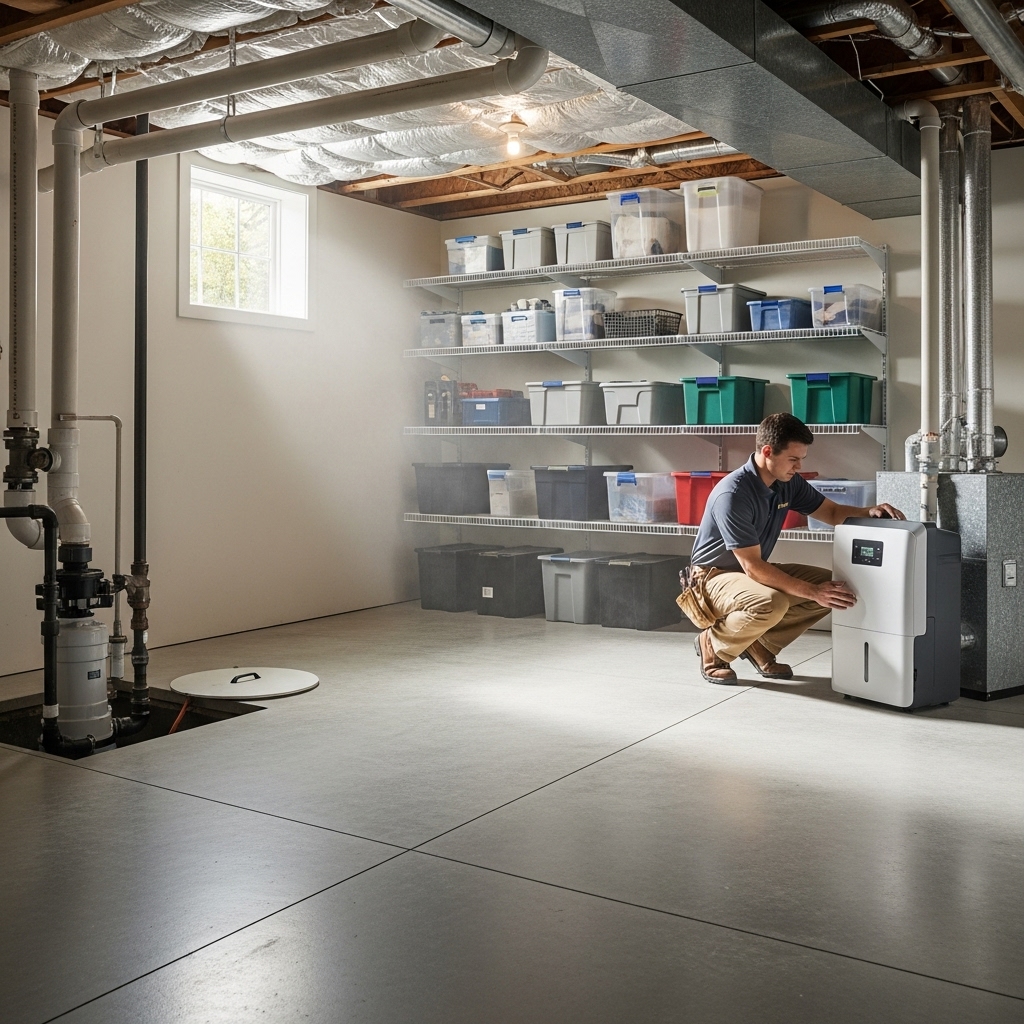Basements in Bloomfield, New Jersey are workhorses—laundry areas, storage rooms, play spaces, and sometimes cozy dens. They’re also ground zero for persistent musty smells. Cool foundation walls, limited sunlight, and seasonal humidity make basements particularly vulnerable to excess moisture and mold odor. Fortunately, with a careful plan that targets moisture first and odor second, you can reclaim the space and keep it fresh all year. If you need a structured roadmap, local experts can tailor a plan for mold odor removal that addresses your basement’s unique conditions.
This guide walks you through the root causes of odor, a step-by-step cleanup path, and smart upgrades that prevent smells from returning. You’ll also find answers to common questions and a practical routine to maintain results.
Why Basements Smell Musty
Mold thrives where moisture meets organic material. In basements, that can be the paper facing on drywall, the backing of carpet, dust on joists, or cardboard boxes. Weather plays a big role: after heavy rain, hydrostatic pressure can push moisture through tiny cracks in masonry. In humid summers, warm air entering a cool basement can condense on pipes and walls. The result is a persistent, stuffy odor that seems to settle into everything.
Step 1: Stabilize Moisture
Start with drying and airflow. Without this, any deodorizing will be temporary.
- Dehumidify: Run a properly sized dehumidifier and keep doors open for air exchange.
- Ventilate: If you have windows, use cross-ventilation when outdoor air is drier than indoor air.
- Address bulk water: Fix leaks, extend downspouts, and clear gutters to route water away from the foundation.
- Insulate cold surfaces: Pipe insulation and vapor-aware wall treatments help prevent condensation.
Step 2: Declutter and Remove Odor Reservoirs
Basements often collect items that love moisture. Removing them makes drying faster and reduces odors.
- Swap cardboard for plastic totes with lids.
- Discard damp paper goods, old carpet scraps, and fabrics that stayed wet.
- Elevate storage on wire shelving to let air circulate around items.
Step 3: Clean Methodically
Once moisture is under control, clean surfaces to remove dust and residues that hold odor.
- HEPA vacuum floors, baseboards, joists, and ledges.
- Wipe walls and floors with appropriate cleaners and rinse as directed.
- Launder washable textiles; dry fully before returning them.
- Let fans move air across surfaces until dry to the touch.
Step 4: Neutralize Remaining Odors
After drying and cleaning, apply neutralizers designed for musty odors on masonry, wood, and other basement surfaces. Follow label instructions, pay attention to ventilation, and avoid over-application that can leave residues.
Mind the HVAC
If your basement connects to your home’s HVAC, odor can travel upstairs. Replace filters regularly, ensure the condensate drain is clear, and consider professional inspection if the smell intensifies when the system runs. Treating the basement without addressing the HVAC can prolong the problem.
Simple Upgrades That Make a Big Difference
- Drainage improvements: Extend downspouts and verify grading slopes away from the house.
- Sump system maintenance: Inspect pumps, pits, and discharge lines seasonally.
- Vapor-aware wall finishes: Choose options that allow walls to dry rather than trap moisture.
- Flooring choices: Prefer hard, moisture-tolerant surfaces over wall-to-wall carpet.
- Dedicated dehumidification: A continuous drain and humidity sensor make daily control easier.
Signs of Hidden Issues
If odor persists after diligent work, consider hidden sources: behind finished walls, under subfloors, or within insulation. Stained baseboards, soft drywall, or a smell that increases after rain all point toward concealed moisture. In those cases, a targeted inspection can save time and prevent repeated cleaning cycles.
Maintenance Routine for Long-Term Freshness
- Run the dehumidifier and check humidity weekly.
- Inspect for leaks after heavy rain.
- Rotate stored items and avoid placing boxes directly on the floor.
- Clean window wells and ensure covers are intact.
- Wipe down high-dust surfaces monthly and vacuum with a HEPA filter.
Frequently Asked Questions
Q: Why does the smell return after I clean? A: If moisture isn’t under control, odors come back. Dry first, then clean and neutralize.
Q: Will sealing the walls solve it? A: Sealing can help but only after walls are dry and drainage is addressed. Trapping moisture can worsen odor.
Q: Is carpet a bad idea in basements? A: Wall-to-wall carpet often holds moisture. If you want softness, consider area rugs you can launder.
Q: How low should I keep humidity? A: Aim for a range that discourages mold—typically below 50% indoors when possible.
Q: Should I open basement windows in summer? A: Only when outdoor air is drier than indoor air. Otherwise you may bring in humidity that condenses on cool surfaces.
Reclaim Your Basement Air
A fresh, dry basement is achievable with steady moisture control, targeted cleaning, and smart upgrades. If you want a faster path and fewer trial-and-error steps, consider professional support for mold odor removal tailored to Bloomfield basements. With a clear plan and consistent upkeep, the musty smell can become a thing of the past.

